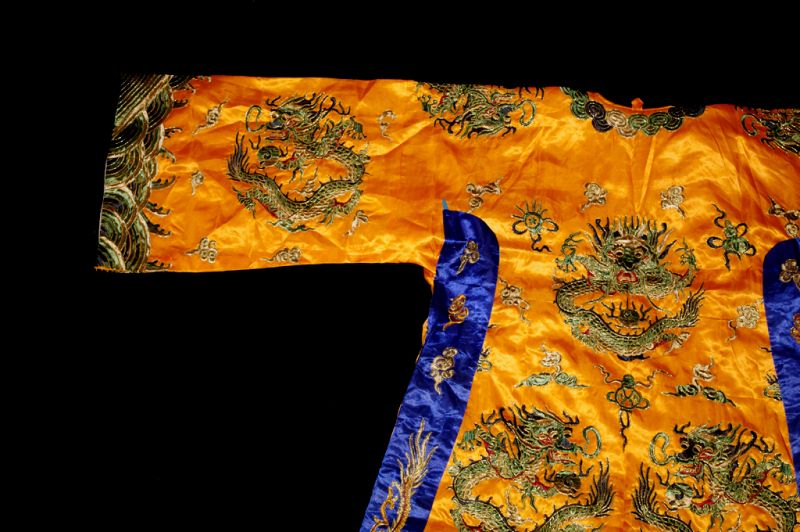Traditional Chinese Theater Costume (age 10 years) - Qing Dynasty Emperor
Ancient Chinese Theater Costumes: A Cultural and Artistic Treasure:
Traditional Chinese theater costumes, with their vibrant colors, intricate patterns, and refined accessories, represent much more than simple clothing. They embody centuries of history, culture, and spirituality, playing a vital role in theatrical performances, especially in iconic genres such as Peking Opera. Here we have an ancient costume made of silk and embroidery (approximately 10 years old). With its variety of colors and richness of ornaments, such costumes play a significant role in captivating the audience.
Ancient Chinese Theater Costumes: A Cultural and Artistic Treasure:
Chinese theater costumes date back centuries, influenced by dynasties such as Tang, Song, and Ming. Designed to captivate audiences and enrich narratives, they serve a symbolic function: each color, pattern, and costume style conveys information about the character.
Colors: Vibrant colors are not chosen randomly. For example, red symbolizes loyalty and courage, while yellow is reserved for emperors or deities. Black, on the other hand, can represent integrity or a just but rigid character.
Patterns: Embroidered patterns, often handmade, include dragons, phoenixes, flowers, and other symbols from Chinese mythology and folklore. These elements enhance the character's status or traits.
Styles: Costumes vary according to social class, professions, and roles (warrior, scholar, noblewoman, clown, etc.) portrayed on stage.
Iconic Costume Types:
In traditional Chinese theater, several costume types are adapted to different genres and eras:
Peking Opera Costumes: These are perhaps the most famous, featuring long sleeves called water sleeves used to emphasize actors' graceful movements.
Historical Costumes: Inspired by clothing from great Chinese dynasties, these bring legendary and epic tales to life.
Fantasy Costumes: These represent mythical beings such as immortals, deities, or spirits, often adorned with feathers and shimmering materials.
The Role of Accessories:
Costumes would not be complete without carefully chosen accessories. Elaborate hairstyles, such as imperial hats or pearl ornaments, add authenticity. Elevated shoes, called jindou, amplify the stature of important characters. Finally, masks and makeup, often used together, enhance emotions and distinctive character traits.
Costume Colors:
- Red: Symbol of dignity and joy.
- Black: Reserved for high-ranking officials, symbolizing severity and humility.
- Yellow: Symbolizes the imperial family and emperors.
- White: Reserved for mourning.
- Pink: Color of joy, cheerfulness, and lightness.
- Green: Associated with concubines and servants.
- Blue: Symbolizes honesty and simplicity.
A Living Art That Endures:
Despite modern evolutions, Chinese theater costumes remain a source of inspiration. They are still used in traditional performances and contemporary adaptations. Their creation remains a complex art, requiring skilled artisans and respect for ancient traditions.
Ancient Chinese theater costumes are not merely garments; they are works of art, carriers of history and culture. Through them, audiences can immerse themselves in the imagination of Chinese legends and stories while admiring the incredible craftsmanship passed down through generations. These costumes remind us that Chinese theater is a living treasure of world heritage.

















